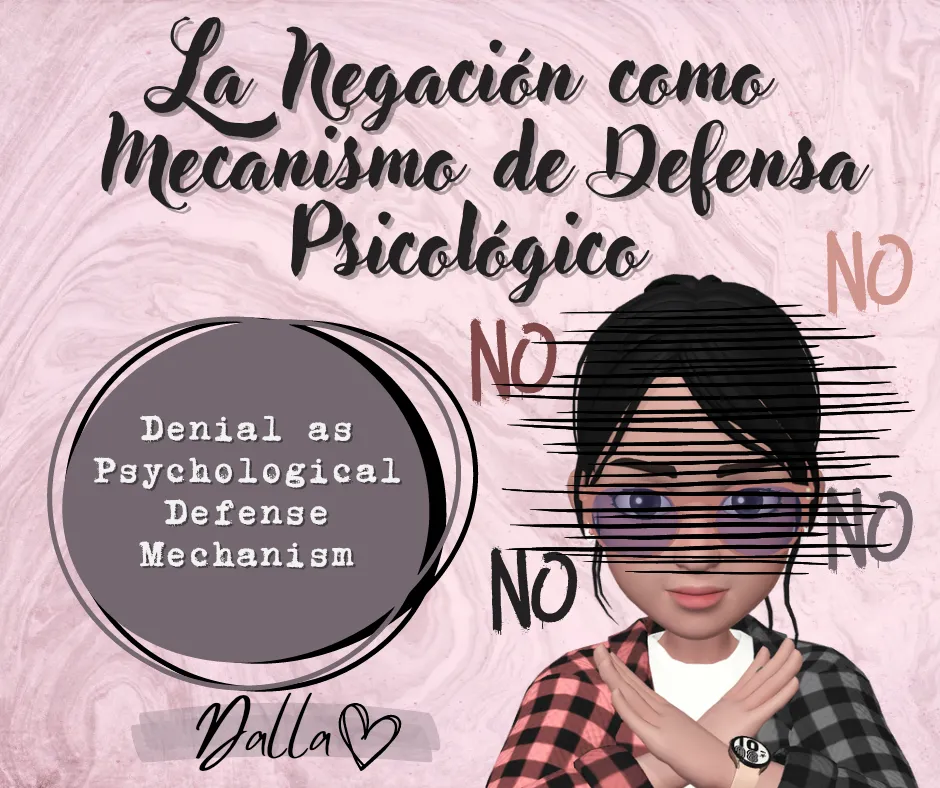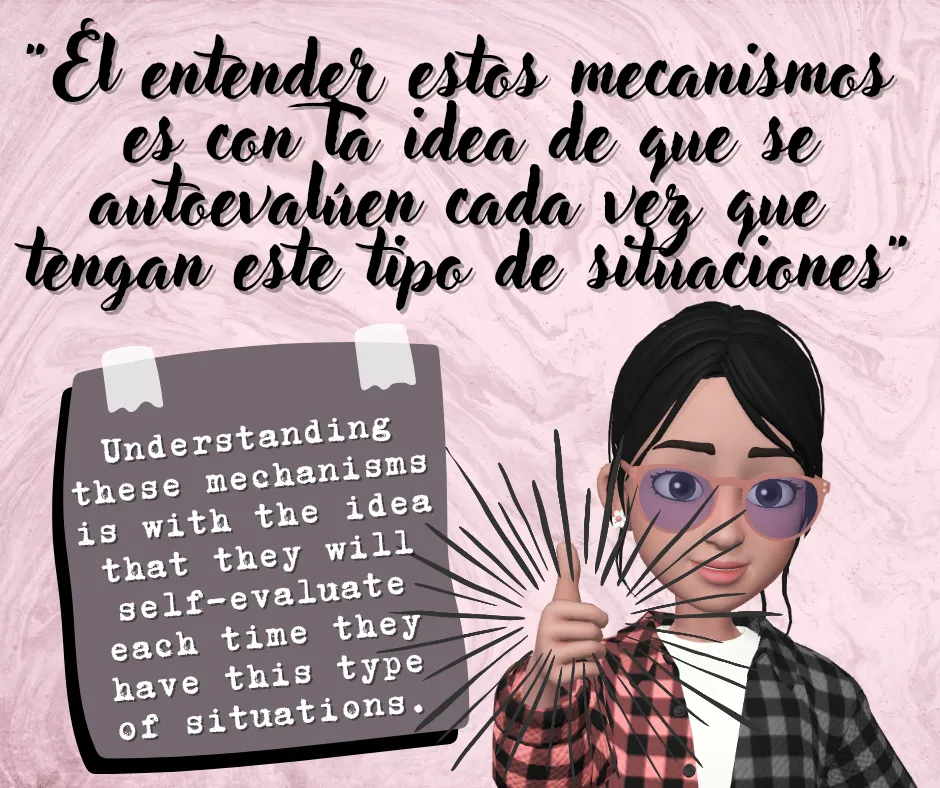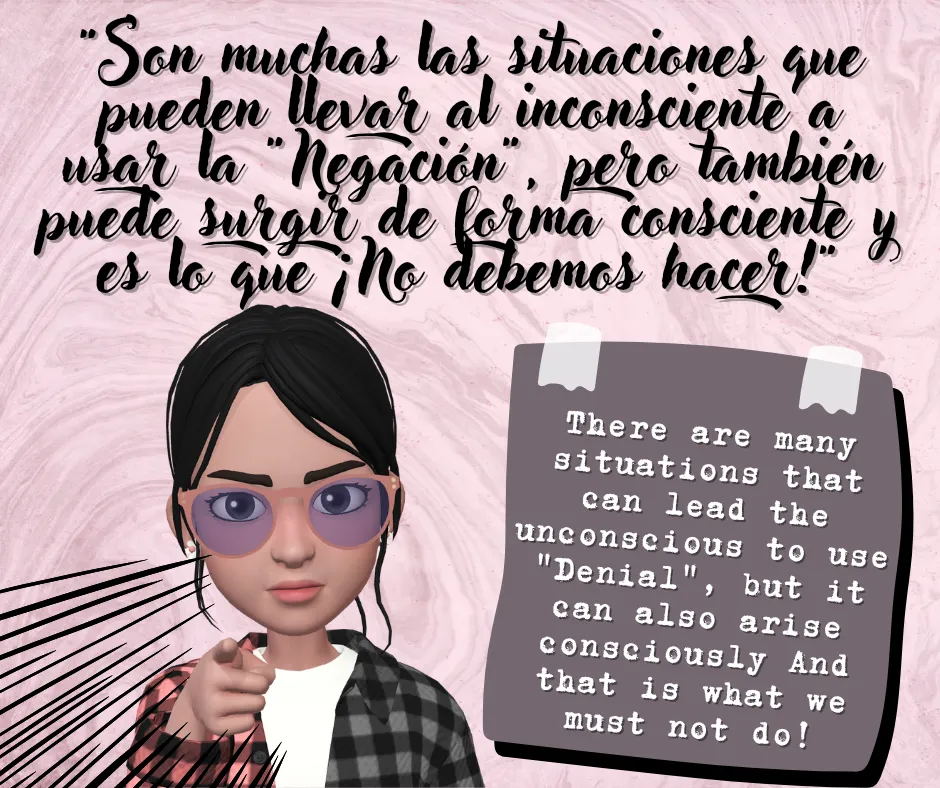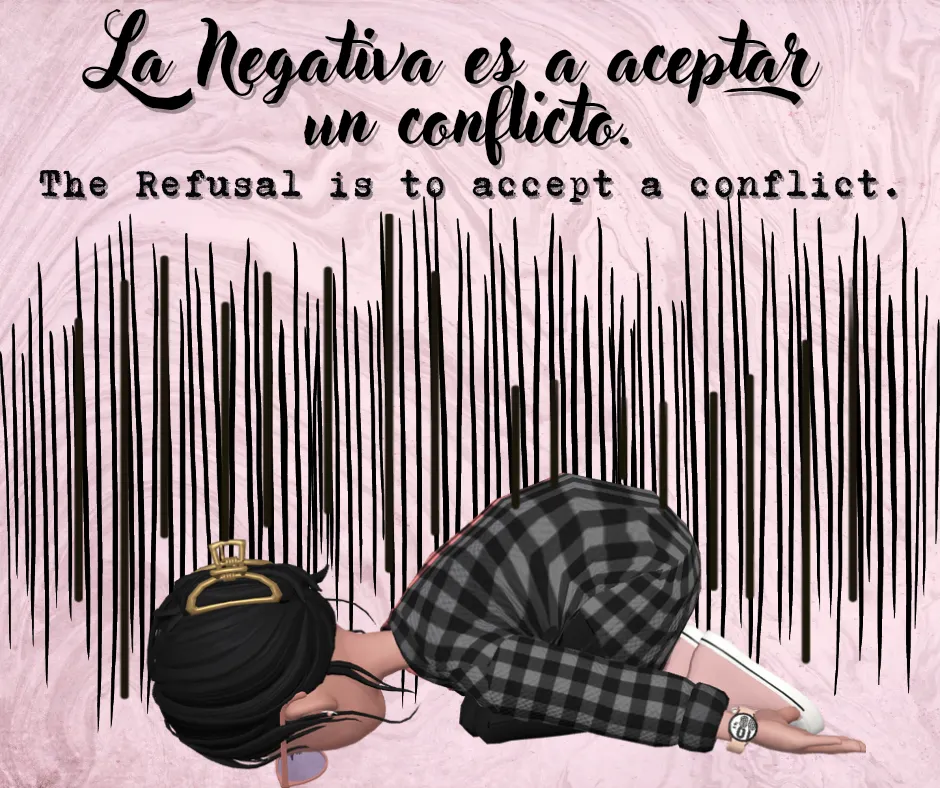

¿Sabías que tu inconsciente actúa tan bien, que incluso puedes no ver una realidad que es visible para todos, como forma de protección ante el sufrimiento, la incomodidad o el desagrado? Y este es un Mecanismo de Defensa Psicológico.
¿Te ha pasado que te han dicho varias personas una misma opinión distinta a la tuya, que reacciones, que tal persona es de una forma específica que te está haciendo daño, te están engañando, que tal día sucedió algo y tú no lo viste, aunque fue muy evidente, pero tú sigues sin estar de acuerdo con eso?
Pues ¡sí amigos! como les he venido hablando en los otros post, que pueden ver aquí y aquí nuestro inconsciente escapa de nuestro control y es capaz de usar mecanismos bien radicales para protegerte, y eso está bien en algunos momentos, pero no para usarlos permanentemente.
El problema con estas estrategias de la mente es que pueden fácilmente salirse de control y prolongarse en el tiempo, o usarse muchas veces si no se intentan manejar como es debido, por eso es importante escuchar a los demás, pedir opiniones en quienes confiamos, si es necesario e intentar conscientemente reaccionar antes de utilizarlos.
El entender estos mecanismos es con la idea de que se auto evalúen cada vez que tengan este tipo de situaciones, de que no se empeñen tanto en tener la verdad absoluta en sus manos, porque no siempre puedes ver lo que todos ven, tenemos sentimientos, tenemos sesgos cognitivos y podríamos solo ver una pequeña porción de la realidad que comparten con todos los demás.
Did you know that your unconscious acts so well, that you can even not see a reality that is visible to everyone, as a form of protection against suffering, discomfort or displeasure? And this is a Psychological Defense Mechanism.
Has it ever happened to you that several people have told you the same opinion different from yours, that you should react, that such and such a person is in a specific way that is hurting you, that they are deceiving you, that such and such a day something happened and you did not see it, although it was very evident, but you still do not agree with it?
Well yes friends! as I have been talking to you in the other posts, that you can see here and here our unconscious escapes from our control and is able to use very radical mechanisms to protect you, and that is fine in some moments, but not to use them permanently.
The problem with these strategies of the mind is that they can easily get out of control and prolong in time, or be used many times if we do not try to manage them properly, that is why it is important to listen to others, ask for opinions from those we trust, if necessary, and consciously try to react before using them.
Understanding these mechanisms is with the idea of self-evaluation every time they have this kind of situations, so they do not try so hard to have the absolute truth in their hands, because you can not always see what everyone sees, we have feelings, we have cognitive biases and we might only see a small portion of the reality that they share with everyone else.



Nuestra psique está preparada para soportar problemas, claro que sí, pero tiene un límite, algunas veces se desequilibra por completo y no es capaz de soportar severos conflictos y en esos casos puede hacer uso de este Mecanismo de Defensa del que vengo a hablarles, conocido como "Negación".
En este mecanismo literalmente, como su nombre lo indica, nos "Negamos" a ver una realidad, algún hecho, defecto, problema, a aceptar algo que no queremos porque afectará el equilibrio de la estructura de nuestra psique, con todo lo que esto implica como: nuestra autoestima, estabilidad mental o emocional. Puede incluso empezar siendo algo consciente hasta que el inconsciente toma el control y lo vuelve algo recurrente y patológico.
El mecanismo se pone de manifiesto en situaciones extremadamente chocantes para el individuo, como por ejemplo el afrontamiento del fallecimiento de algún ser querido, es el más común de los ejemplos que podremos encontrar y el más fácil de entender, porque la negación forma parte de una de las etapas clásicas de la mayoría de los duelos.
En ella veremos una persona que se niega a aceptar una realidad que es extremadamente dolorosa, tendremos un proceso que inicia la adaptación de su mente a la ausencia de ese ser querido, por lo que ésta intentará usar los recursos que posea a la mano para evitar afrontar el conflicto hasta que se sienta lo suficientemente fortalecida, para, por fin, dejarlo un poco de lado y avanzar en el proceso.
Esto que le acabo de decir es un proceso que sucede en la mayoría de las personas que afrontan un duelo, pero podemos verlo en otros casos, como cuando se está pasando por un proceso de enamoramiento, ya que durante este proceso es normal que la persona se niegue a ver las características negativas de ese ser que está idealizando.
Por supuesto ese proceso no dura para siempre, son algunos meses hasta que su psique se acostumbra a la liberación de neurotransmisores asociados principalmente a la felicidad y a ver la realidad tal y como es. En este momento es probable que la persona empiece a ver esas cosas negativas que todos les decían de esa persona y ella no veía de forma inconsciente.
Our psyche is prepared to support problems, of course it is, but it has a limit, sometimes it is completely unbalanced and is not able to withstand severe conflicts and in those cases it can make use of this Defense Mechanism that I come to talk about, known as "Denial ".
In this mechanism literally, as its name indicates, we "Deny " to see a reality, some fact, defect, problem, to accept something that we do not want because it will affect the balance of the structure of our psyche, with all that this implies such as: our self-esteem, mental or emotional stability. It can even start being something conscious until the unconscious takes control and turns it into something recurrent and pathological.
The mechanism is revealed in extremely shocking situations for the individual, such as coping with the death of a loved one, is the most common example that we can find and the easiest to understand, because denial is part of one of the classic stages of most of the grief.
In it we will see a person who refuses to accept a reality that is extremely painful, we will have a process that begins the adaptation of his mind to the absence of that loved one, so he will try to use the resources at hand to avoid facing the conflict until he feels strong enough to finally leave it aside and move forward in the process.
What I have just told you is a process that happens in most people facing a grief, but we can see it in other cases, such as when going through a process of falling in love, since during this process it is normal that the person refuses to see the negative characteristics of the being he or she is idealizing.
Of course this process does not last forever, it takes a few months until the psyche gets used to the release of neurotransmitters associated mainly to happiness and to see reality as it is. At this point it is likely that the person will begin to see those negative things that everyone told them about that person and they did not see unconsciously.



También es probable que conscientemente se niegue a verlas, porque presente otros estados emocionales patológicos, como dependencia, miedo al abandono, soledad, etc, de tal forma que convierte lo que ve de forma consciente en un elemento que guarda para olvidarse de él y le permite seguir actuando en base a lo que ella desea, sin sentir dolor, frustración, disminución de su autoestima o rabia.
Existen otras situaciones traumáticas que ameritan este mecanismo psicológico para que el individuo pueda seguir llevando a cabo una vida lo más normal posible, por ejemplo, cuando presencian un acontecimiento extremadamente doloroso como la muerte de un familiar, el maltrato físico a un ser querido o sexual a sí mismos, por ejemplo.
Es un asunto complejo, pero en algunos casos el proceso causa tanto sufrimiento, que es incluso para los que practicamos la medicina o la psicología preferimos dejar que la persona siga afrontando su realidad actual negando ese acontecimiento, sin embargo, en la mayoría de los casos, el solo bloquear el hecho ocurrido y negarnos a aceptarlo como algo que se vivió puede manifestarse de otras formas, porque es un conflicto psicológico que no se ha manejado por complejo o no se ha sanado, lo que lo obligará a que tarde o temprano deba acceder a ese recuerdo e intentar manejarlo, así que solo dejamos que la persona busque la ayuda cuando sienta que necesita sanar.
Existen otras situaciones más banales, el de las personas que se niegan a ver lo que otros les dicen que han hecho mal, sencillamente se niegan a ver ese lado de sí, prefieren mantenerse creyendo que siempre actuaron bien, que lo siguen haciendo y que el otro es el que está mal, su nivel de ego no los deja ver nada malo en sí mismos.
Esta persona, como comprenderán, al negarse a ver sus propios errores, jamás podrá corregirlos y por ende tendrá mayor probabilidad de repetirlos en el futuro, serán personas que tendrán los mismos problemas con personas distintas, considerarán sus acciones como normales, aun cuando esas otras les digan que lo han lastimado o hecho molestar por la misma razón, en muchos de estos casos el mecanismo puede iniciarse de forma consciente, la persona que lo usa se negaran a ver su actuación de mala forma, para ellos nunca actuaron mal.
It is also probable that she consciously refuses to see them, because she presents other pathological emotional states, such as dependence, fear of abandonment, loneliness, etc., in such a way that she turns what she consciously sees into an element that she keeps to forget about it and allows her to continue acting on the basis of what she desires, without feeling pain, frustration, diminished self-esteem or anger.
There are other traumatic situations that merit this psychological mechanism so that the individual can continue to lead a life as normal as possible, for example, when they witness an extremely painful event such as the death of a family member, physical abuse to a loved one or sexual abuse to themselves, for example.
It is a complex issue, but in some cases the process causes so much suffering, that it is even for those of us who practice medicine or psychology prefer to let the person continue to face their current reality by denying that event, however, in most cases, just blocking the event that happened and refusing to accept it as something that was lived can manifest itself in other ways, because it is a psychological conflict that has not been handled by complex or has not been healed, which will force him that sooner or later he must access that memory and try to handle it, so we only let the person seek help when he feels he needs to heal.
There are other more banal situations, that of people who refuse to see what others tell them they have done wrong, they simply refuse to see that side of themselves, they prefer to keep believing that they have always acted well, that they continue to do so and that the other is the one who is wrong, their ego level does not let them see anything wrong with themselves.
This person, as you will understand, by refusing to see their own mistakes, will never be able to correct them and therefore will be more likely to repeat them in the future, they will be people who will have the same problems with different people, they will consider their actions as normal, even when those others tell them that they have hurt them or made them upset for the same reason, in many of these cases the mechanism can be initiated consciously, the person who uses it will refuse to see their actions in a bad way, for them they never acted wrong.



¿Con qué intención usarlo en un principio de forma consciente? La de no afrontar su sentimiento de culpa, no afrontar que hay algo mal en ellos que deben trabajar, las consecuencias negativas que se derivan de sus actos y por consiguiente la responsabilidad de resarcir el daño hecho a esos otros.
El problema se presenta porque inicia así, como algo consciente, pero puede llegar un punto después de usarlo de forma tan repetitiva que ya se hace inconscientemente y jamás reconozcan nada del daño que hicieron a otros, lo minimicen o lo dejen pasar de una forma muy rápida, aun cuando la magnitud del daño fue mayor al que ellos pueden reconocer.
También existen otros casos, los casos de personas que se niegan a sentir dolor, se niegan a reconocer que algo les afecta o les afectó y solo permanecen siendo "fuertes" negando cualquier padecimiento o minimizarlo constantemente, incluso tienden a rechazar tanto la debilidad y la vulnerabilidad en sí mismos que les molesta cuando la ven en otros, es un rechazo así mismo proyectado en los demás.
Como verán amigos, son realmente muchas formas en las que puede estar presente este mecanismo de defensa que, si bien puede surgir de forma inconsciente, también puede iniciarse de forma consciente, pero se darán cuenta de que al final todas estas personas terminan mucho más enfermas mentalmente que muchos alrededores.
El no haber aceptado nunca su vulnerabilidad ni haber intentado resolver sus problemas en el inconsciente hará que todo termine complicando y acumulándose cada vez más, será no solo un evento negado, un aspecto negativo, una actitud, es que empezaran acumularse una serie larga de negaciones que lo que hac es complicar muchísimo toda la estructura mental.
Eso es todo por este post mis queridos hivers, como siempre espero que lo que les traigo les sea de ayuda, recuerden lo que siempre digo "la idea es educarnos para ayudarnos a comprendernos a nosotros mismos, para ayudarnos y si no tenemos ninguno de estos problemas, pero sí lo vemos en otros, intentar ayudarlos para que busquen la ayuda pertinente". ¡Los abrazos! 💖
With what intention to use it consciously at first? Not to face their feelings of guilt, not to face that there is something wrong with them that they must work on, the negative consequences that derive from their actions and consequently the responsibility to compensate the damage done to those others.
The problem arises because it starts this way, as something conscious, but it can reach a point after using it so repetitively that it is done unconsciously and they never recognize any of the damage they did to others, they minimize it or let it pass very quickly, even when the magnitude of the damage was greater than they can recognize.
There are also other cases, cases of people who refuse to feel pain, refuse to recognize that something affects them or affected them and just remain "strong" denying any suffering or constantly minimize it, even tend to reject both the weakness and vulnerability in themselves that bothers them when they see it in others, it is a rejection of themselves projected on others.
As you will see friends, there are really many ways in which this defense mechanism can be present which, while it can arise unconsciously, can also be initiated consciously, but you will notice that in the end all of these people end up much more mentally ill than many surroundings.
Not having never accepted their vulnerability nor having tried to solve their problems in the unconscious will make everything end up complicating and accumulating more and more, it will not only be a denied event, a negative aspect, an attitude, it is that they will begin to accumulate a long series of denials that what they do is to greatly complicate the entire mental structure.
That's all for this post my dear hivers, as always I hope what I bring you will be of help, remember what I always say "the idea is to educate us to help us understand ourselves, to help us and if we do not have any of these problems, but we do see it in others, try to help them to seek the relevant help". Hugs! 💖



Todos los banners fueron creados por @liveofdalla usando Canvas y Picsart con recursos gratuitos de ambas Apps.
(Eng) All the banners were created by @liveofdalla using Canvas and Picsart with free resources from both Apps.
DeepL
